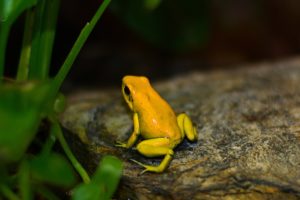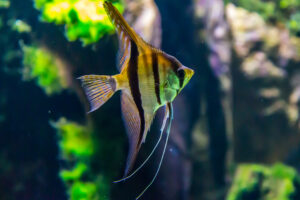For many vivarium experts, the debate about the differences between riparium vs. paludarium has been going on for years. What’s the difference between these two?
As you know it, riparium is another branch off of paludarium. What makes them different?
In this guide, you will learn about:
- The differences when it comes to paludarium vs. riparium.
- The definition of biotopes.
Below is a table of content to help you navigate quicker for this “Riparium Vs. Paludarium” guide.
I would like to remind visitors that there may be affiliate links in this article. When purchasing from these links, I will earn a commission at no extra cost to the buyer.
Before we show you the differences between the two vivariums, you must first understand biotopes.
What Are Biotopes?
Biotopes are generally habitats or ecosystems. Many people may be familiar with the term ‘aquarium’ when referring to containers that are used in providing habitat to aquatic and land plants or even any kind of animal. However, there are more biotopes.
The word biotope comes from the Greek: ‘bios’ meaning life, and ‘topos’ meaning place.
Clearly, different kinds of plants or animals require a different kind of habitat. There are four different kinds of biotopes that suit various animals and plants:
Aquarium, Terrarium, Riparium, and Paludarium.
If you didn’t know, there are many types of vivariums out there. I even wrote a fascinating article on it:
What is a Paludarium
The word paludarium comes from the Greek root “Palu” which means swamp. A paludarium is most likely to include 80% plants yet requires a major portion of water.
Did you know? 💡 People usually attach epiphytic plants to the back of the container when setting up a paludarium.
Many people also install a pump that can configure a waterfall in order to nourish any plants that surround it. Usually, paludariums mimic a certain ecosystem or environment that is found in nature.

Amphibious animals, such as frogs and salamanders, are the most suitable choice for this type of biotope since they adapt easily to both land and water and require a moist environment. However, owners must take care of the water levels in order to keep animals thriving.
What is a Riparium?
Riparium, coming from the Greek root “rip” that means coastal or riverbank, is one of the more obscure biotopes. They are basically in between a paludarium and an aquarium.
Did you know? 💡 In contrast to paludariums, ripariums includes about 80% water and around 20% of the land.
Often, riparium features aquatic animals such as fish. On the other hand, terrestrial animals would not be suitable for this type of biotope due to the lack of above water land area.

Most people would describe riparium as a “planted tank” such as aquariums. Riparium are preferred by people for their beautiful appearance since they usually look like an indoor garden planter
Riparium Vs. Paludarium: What’s The Difference?
Paludariums and ripariums have various similarities and differences.
Example: Paludariums require high humidity, unlike ripariums which don’t require such high levels of humidity, therefore, creating what is often called the “WOW” effect when plants grow out of the tank. Even though both are aquatic, only paludarium is terrestrial.
Since ripariums do not contain many land areas, it isn’t suitable for animals like aquatic turtles and amphibians which would belong in paludariums. They sometimes need CO2 injections in case of medium to high lighting.
Both require a glass tank and a filtering device.

Paludariums can sometimes be habitual to semiaquatic animals, unlike ripariums. One of the major differences between both biotopes is that paludariums have a set land area, while ripariums have limited land area.
Why ripariums can be beneficial: Ripariums are usually more beneficial for numerous reasons, which include providing covers for shy fishes, removing nitrogenous waste from the water column, creating a naturalistic display, and adding vibrant colors to your set up.
In Paludariums, a person can include any kind of plant such as submerged, floating, or terrestrial plants. While in the plants are usually planted in special floating containers that are attached to the rear wall of the artificial reservoir.
From VivariumTips,
The purpose of this “Riparium Vs. Paludarium” guide is to teach readers the differences between the two vivariums.
If you’re planning on starting an ecosystem, choose the one you’re most comfortable with.
There are many types of vivariums out there. I have written many articles related to this subject that you can check out right below:
- Types of Vivariums
- Paludarium Facts You Should Know Before Starting
- Terrarium Vs. Vivarium Vs. Paludarium
- How Much Does A Vivarium Cost?
- Size of Types of Vivariums
To readers, if you have any questions or feedback – feel free to comment right below this article. You can support this blog with free information by sharing this article with a friend or community! 🙂
